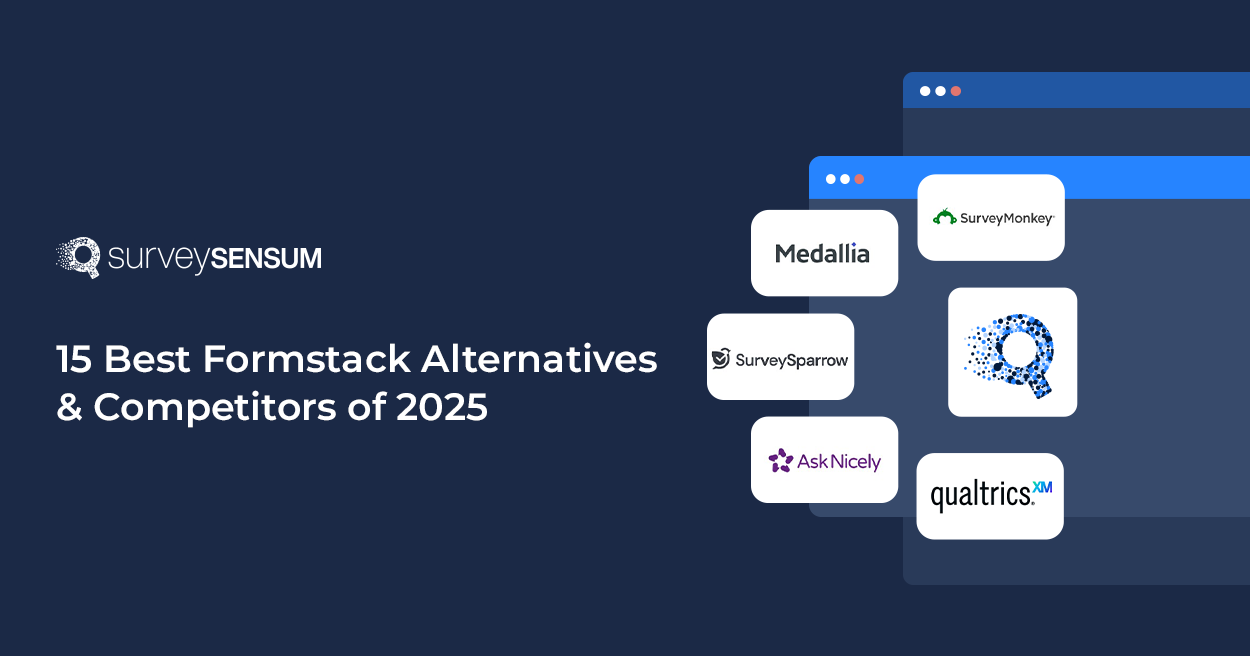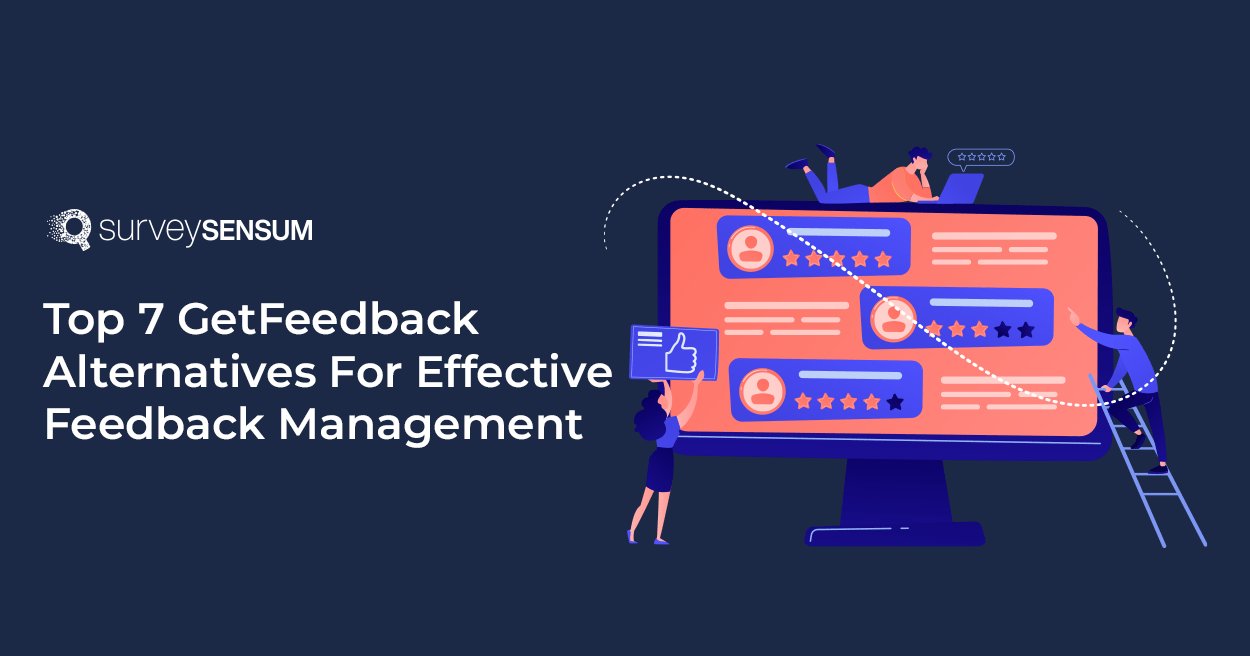
What is the key to creating and delivering personalized experiences that resonate with your customers?
Simple – understanding who your customers are, what they expect, and what motivates them. And that’s where customer profile surveys come in!
So, what are these surveys? How are they helpful in giving you actionable insights into customer expectations to tailor your products, services, and marketing strategies? Let’s find out!
What is a Customer Profile Survey?
Customer profile surveys are aimed at gathering critical customer data like demographics, preferences, behaviors, etc., giving insight into their expectations and needs and allowing you to tailor products and services accordingly.
These surveys allow you to gain a better understanding of your customers so you can create a more personalized interaction, boost customer satisfaction, and foster long-term customer relationships.
However, these are not the only benefits you will reap from customer profile surveys. Let’s understand some key benefits of this survey.
Benefits of Launching Customer Profile Surveys
I find that customer profile surveys provide a holistic view of customer data and valuable insights into what they expect and need from us as service providers.
Here are several reasons why I feel every business should consider launching these surveys.
- Understanding Customer Preferences: A product is only successful when users resonate with it and it creates an impact in their everyday lives. This is where the customer profile surveys help by providing a deeper understanding of customer’s preferences, interests, and pain points. This enables businesses to tailor products, services, and communication to meet customer needs effortlessly.
- Personalizing Communications: With the data from these surveys, businesses can segment their audience and create highly targeted customer interactions and marketing campaigns. Personalization based on customer profiles leads to better engagement, higher conversion rates, and improved customer satisfaction.
- Enhancing Product Development: By understanding customer expectations and needs, businesses can improve their product development strategies or develop new ones that align better with customer expectations, leading to better conversion rates.
- Improving Customer Retention and Loyalty: Customer profile surveys allow businesses to identify the factors that drive customer loyalty and satisfaction. By addressing these factors, businesses can enhance customer retention, reduce churn, and build stronger relationships with their customers
However, understanding the importance of a customer profile survey is enough, you also need to understand the different types of questions to ask their advantages.
Essential Questions to Ask In a Customer Profile Survey
Here are some important questions that you need to ask in your customer profile survey in order to gain relevant and actionable information.
1. Demographic Questions
What: These questions help gather basic information about a customer such as name, age, gender, etc.
Why: Demographic questions are essential for a customer profile survey as they help you gain insights into the different customer segments. This segmented data will help you tailor experiences, interactions, and marketing strategies, specific to a particular demographic.
Questions To Ask:
- What is your age? (Helps target age-appropriate products/services)
- What is your gender? (Useful for gender-specific marketing strategies)
- Where do you live? (Helps businesses understand geographic preferences and needs)
- What is your occupation? (Gives insights into purchasing power and interests)
- What is your highest level of education? (Indicates how to communicate with customers in terms of tone and complexity)
2. Psychographic Questions
What: These questions help gather information on customers’ values, lifestyles, and interests.
Why: Psychographic questions help you understand the “why” behind customer purchasing decisions and help you understand why they behave the way they do when it comes to interacting with your business. This data enables companies to appeal to customers’ motivations and align products or services with their values, hobbies, and attitudes.
Questions To Ask:
- How do you like to spend your free time? (Reveals interests and hobbies for better engagement)
- What are the most important values to you when choosing a product or service? (Helps align your offerings with customer values)
- What are your top 3 favorite brands? (Offers insights into brand preferences and potential competitors)
- How do you define success in your personal or professional life? (Helps understand deeper motivations)
- Which activities or hobbies are you most passionate about? (Guides the development of marketing messages that resonate with their lifestyle)
No need to start surveys from scratch! With SurveySensum’s survey builder packed with DIY capabilities, industry-specific survey templates, advanced customization, etc, you can create engaging surveys in just under 5 minutes!
3. Behavioral Questions
What: These questions provide insight into how customers behave in terms of product usage, purchasing, and brand interaction.
Why: Behavioral questions help you reveal recurring patterns and optimize product offerings, identify cross-selling opportunities, and understand how frequently customers engage with their brand.
Questions To Ask:
- How often do you purchase products from [Company Name]? (Helps determine customer loyalty and repeat business)
- What is the average amount you spend per purchase? (Gives insight into the customer’s budget and spending habits)
- How did you first hear about our brand? (Useful for assessing the effectiveness of marketing channels)
- Do you prefer shopping online or in-store? (Informs strategy on which shopping experience to prioritize)
- How frequently do you use [specific product]? (Helps determine product satisfaction and future needs)
4. Customer Sentiment Questions
What: These questions help identify the challenges or pain points customers face and the solutions they expect.
Why: Customer sentiment questions help you understand the pain points, needs, and expectations of customers when it comes to your products and overall business.
Questions To Ask:
- What is your biggest challenge when using [product/service]? (Helps identify areas for product improvement)
- What features are most important to you in a [product/service]? (Guides product development and feature prioritization)
- What would make your experience with our brand easier or more enjoyable? (Helps improve the customer experience)
- Have you encountered any problems with our product/service? If so, please explain. (Provides direct feedback on pain points)
- What do you wish was different about our [product/service]? (Offers actionable insights for enhancement)
Create customer profile surveys with the help of SurveySensum’s robust survey builder packed with DIY capabilities like customizable survey templates, white labeling, skip logic, etc!
These are some of the important questions to ask while creating customer profiles. However, asking the right questions is not the end game, it’s what you do with the information that matters the most.
How To Analyze and Leverage Data From Customer Profile Surveys?
Once you’ve collected data from customer profile surveys, the next step is to analyze and apply the insights to improve various aspects of your business. Here’s how you can utilize the data effectively:
1. Customer Segmentation Based On Survey Data
Customer segmentation allows you to tailor your product offerings, customer interactions, and marketing strategies to specific groups rather than creating a one-size-fits-all strategy, ensuring that your communication resonates with each customer’s unique needs. It enables you to understand and cater to the distinct needs and preferences of each customer group rather than treating your entire customer base as a homogenous group.
So, use the demographic, psychographic, and behavioral data from the customer profile survey to divide your customer base into different segments or groups. Some common areas for this distinction include age, gender, location, buying behaviors, pain points, etc.
2. Personalizing Communications and Experiences
Personalization allows you to create a deeper and more meaningful relationship with your customers. In fact, 91% of consumers are more likely to shop with brands that provide relevant offers and recommendations.
This is why after segmenting customers based on demographic, psychographic, and behavioral data, it is now time to take action by creating personalized experiences, communications, and marketing strategies.
So,
- Use segmented customer data to send personalized and relevant communications like emails, messages, offers, discounts, etc.
- Create landing pages that cater to different audience segments based on their preferences and behaviors (e.g., showing specific products to eco-conscious or budget-conscious customers).
- Use customer data to tailor website experiences with personalized content, offers, and product suggestions.
3. Optimizing Customer Journey Mapping
Customer journey mapping helps businesses target the right messages at the right times, improving the overall experience and increasing the conversion rate at each touchpoint in the customer journey.
So,
- Use behavioral data to determine which stages of the customer journey (e.g., discovery, consideration, decision, post-purchase) need better engagement or nurturing.
- Target different segments with tailored messages at specific stages of the funnel (e.g., first-time visitors receive introductory content, returning customers get loyalty offers).
- Improve pain points in the customer journey, such as simplifying checkout processes, improving post-purchase support, or addressing common customer frustrations.
Conclusion
As customer expectations continue to grow for hyper-personalization, investing in customer profile surveys is not just beneficial, it is becoming a necessity for long-term business success. Whether it’s segmenting your audience for targeted campaigns, delivering tailored product recommendations, or enhancing the customer journey, the data from customer profile surveys lays the foundation for building stronger, more meaningful customer relationships.















